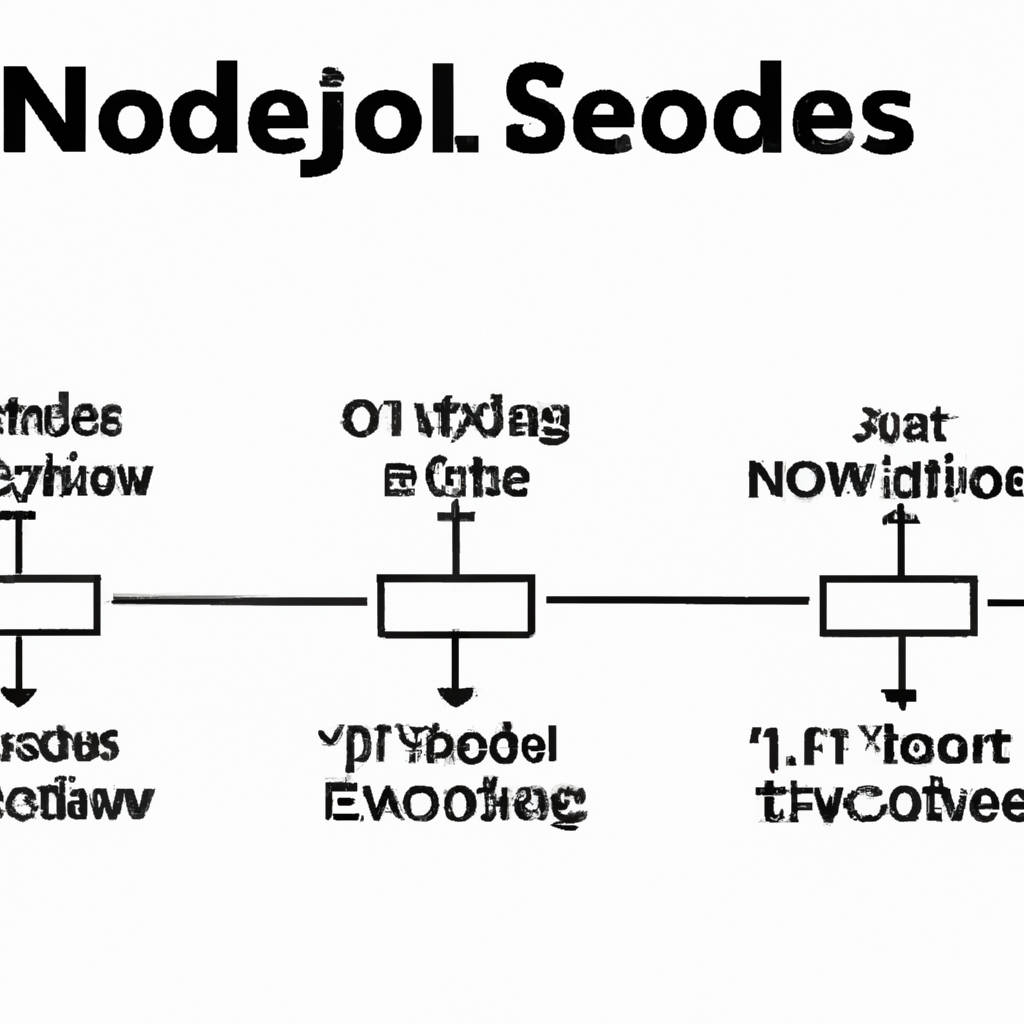The easiest way to schedule Node.js code execution is by utilizing npm modules like node-schedule, later or cron. Node-schedule is a flexible cron-like and not-cron-like job scheduler for Node.js. It allows you to schedule jobs (arbitrary functions) for execution at specific dates, with optional recurrence rules. It only uses a single timer at any given time rather than reevaluating upcoming jobs every second/minute. On the other hand, later is a library for describing recurring schedules and calculating their future occurrences. It supports both common recurrences, such as every M W F, as well as more complex schedules like “every 5 mins between 10:00 and 14:00”. Cron module for Node.js allows you to schedule tasks in your Node.js applications. By using a syntax similar to the Unix cron syntax, you can create flexible scheduling. These are a few of the many npm modules which can be used to schedule Node.js code execution and are easy to use and understand.
Node.js has gained immense popularity due to its non-blocking, event-driven architecture and its ability to run JavaScript on the server-side. This makes it an ideal choice for developing high-performance applications. However, executing certain tasks at specific times or intervals can be a challenge. Fortunately, there are tools available within the Node.js ecosystem that can make this task easier. For instance, the node-schedule, later and cron npm modules provide a simple and straightforward way to schedule tasks or functions to run at specific times.
Among these, node-schedule is a favorite among many developers due to its versatility and simplicity. It allows developers to schedule jobs or functions to run at specific times or dates, with the additional option of setting recurrence rules. For example, a task could be set to run every Monday at 9 AM, or every 15 minutes on weekdays between 8 AM and 5 PM. The functionality of this module is simple yet powerful, and it does not require a deep understanding of complex scheduling algorithms or principles.
Alongside, the later module is another reliable tool for scheduling tasks in Node.js. It is designed to describe recurring schedules and calculate their future occurrences. The module supports common recurrences as well as more complex schedules, providing a high level of flexibility. For example, a task could be scheduled to run every three hours, or every five minutes between 10 AM and 2 PM. This module is particularly useful in scenarios where tasks need to occur frequently or at specific intervals.
Lastly, the cron module is a well-known tool for task scheduling in the Unix environment, and its functionality has been ported to Node.js. It enables developers to schedule tasks using a syntax that is similar to the Unix cron syntax. This means that developers familiar with Unix will find it easy to use this module. This module is especially useful for tasks that need to run at specific times or on specific days.
In conclusion, scheduling tasks in Node.js has been made easier with npm modules like node-schedule, later, and cron. These modules provide an easy-to-use, flexible, and powerful solution for scheduling tasks or functions to run at specific times or intervals. Whether you need to run a task once a day, every hour, or at a specific time on a specific day, these modules have got you covered.

Subscribe for More Insights
Subscribing for more insights is an excellent approach to enrich your knowledge base, enhance your understanding of various topics, and stay updated with the latest trends and innovations. Whether you’re a professional seeking to boost your expertise, a student eager to expand your academic understanding, or an individual craving to feed your curiosity, subscribing for insights can significantly benefit you. It could be in the form of newsletters, online courses, podcasts, blog posts, or industry reports. The insights you gain from these resources can empower you to make informed decisions, stimulate creative thinking, and foster personal as well as professional growth.
Moreover, subscribing ensures that these insights are conveniently delivered to you, eliminating the need to actively search for them. You get the privilege of having a curated selection of information, tailored to your interests, at your fingertips. This can save you valuable time and effort, and enable you to focus on absorbing and applying the knowledge. Furthermore, these subscriptions often come with exclusive content, early access to new materials, and personalized recommendations, enhancing the value you receive.
While it’s essential to choose reliable and credible sources for subscriptions, it’s equally important to diversify your subscriptions. Exploring insights from various fields can broaden your perspective, stimulate interdisciplinary thinking, and empower you to connect dots across different domains. This can cultivate innovation and creativity, and make you a more well-rounded individual.
To conclude, subscribing for more insights is a worthwhile investment. It equips you with a wealth of knowledge, promotes continuous learning, and provides an edge in this rapidly evolving world. So, it’s time to tap into the power of subscriptions and open the doors to a world of insights!
Minimizing Churn with Stripe and ChatGPT
Reducing customer churn is a paramount concern for businesses, and this process can be remarkably improved with the integration of Stripe and ChatGPT. Stripe, a financial services and software platform, facilitates transactions between businesses and their customers. It’s designed to manage businesses of all sizes, ensuring seamless payment experiences which can contribute to customer retention. Notably, Stripe’s advanced subscription billing tools can help companies track their recurring revenue, spot potential churn signals, and implement preventive measures to reduce churn rate. On the other hand, ChatGPT is an AI model developed by OpenAI that excels in generating human-like text based on the prompts given. Businesses can use ChatG goodPT to offer prompt, personalized, and efficient customer service. The ability of ChatGPT to interpret customer inquiries and respond accurately can help in resolving problems swiftly, thereby preventing customer dissatisfaction or frustration that might result in churn. Furthermore, ChatGPT can be utilized to proactively engage with customers, send reminders about upcoming payments or subscription renewals, and provide comprehensive support. The combined power of Stripe and ChatGPT can provide a robust solution for businesses to enhance customer satisfaction, minimize churn and improve their bottom line. By enabling secure transactions and effective customer engagement, businesses can foster a stronger relationship with their customers, and ensure a higher customer retention rate.

Integrating Your Own OAuth Clients
Integrating your own OAuth clients into your application or platform can prove to be a tremendous asset. OAuth, or Open Authorization, is a standard protocol that allows users to share their private resources stored on one site with another site, without needing to provide the credentials of their accounts. The process of integrating OAuth clients involves setting up an OAuth2 server, which handles the complex process of authenticating and authorizing requests. This server is responsible for ensuring that only approved clients can access the user’s data, which is crucial for maintaining privacy and security.
When creating your own OAuth clients, you will need to choose between two types of access tokens – opaque and JWT. Opaque tokens are encrypted, meaning they cannot be tampered with or decoded. On the other hand, JWT tokens are encoded, but not encrypted. They can be decoded to reveal the data inside but cannot be tampered with, as doing so would change the signature of the token and render it invalid. Your choice between these two types of tokens will depend on the specific needs of your application.
Finally, integrating your own OAuth clients can lead to enhanced user experience. By allowing users to log in with their existing accounts, such as Google or Facebook, you remove the need for them to create a new account and remember another password. This streamlines the login process, making it quicker and more convenient for the user. Furthermore, by only asking for the specific permissions that your application needs, you can ensure that you are not unnecessarily invading the user’s privacy. This can help to build trust between your application and its users, strengthening your relationship with them.
Building an Out-of-Office Reminder System
Building an out-of-office reminder system is an ingenious solution for managing communications in a professional setting, especially when individuals are not available. This system can be an integral part of a company’s communication strategy, offering an automatic response to any incoming emails during an employee’s absence. The reminder system not only informs the sender about the recipient’s unavailability, but it can also provide an alternative contact for urgent matters, ensuring seamless communication flow. The structure of this system is simple, yet highly efficient, requiring only basic setup in most email platforms.
One of the primary benefits of this system is that it prevents any possible miscommunications or delays that might occur due to unattended emails. It also helps maintain a professional image, as it shows the company’s commitment to effective communication and respect for the sender’s time and effort. The out-of-office reminder is not just a tool for managing emails during vacations or holidays, but it is also crucial during working hours when one is in meetings, seminars, or involved in other tasks that prevent immediate response to emails.
The out-of-office reminder system is also customizable. It can be tailored to fit each individual’s schedule and responsibilities. For instance, an employee may provide details of their return, suggesting when the sender can expect a reply. Alternatively, they may choose to route the sender to another colleague who can assist in their stead.
Moreover, the system can be programmed to recognize specific contacts or types of emails, offering a more personalized response. This level of customization adds a human touch to automated messages, making them more acceptable and appreciated by senders.
In conclusion, an out-of-office reminder system is a simple, yet powerful tool that can significantly improve a company’s communication efficiency. Its ability to manage expectations, maintain professionalism, and ensure uninterrupted communication flow makes it an indispensable asset in today’s fast-paced corporate world.
